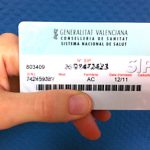Last updated on September 13th, 2019 at 09:09 am.
Whether you are on holiday or living in Spain, chances are that at some time you will need to pay a visit to the Spanish chemist or ‘farmacia’. The chemist in Spain is usually extremely good and in most outlets at least one member of staff will speak English.
They give advice and hand out drugs that might require a prescription elsewhere. One of the chemists in your area will be open 24 hours and details about its location are posted on all chemist’s doors.
Although medicines in Spain tend to be cheaper anyway, they are also offset by discounts depending on your level of income. The Spanish chemist will take your prescription and your SIP (health card) and the price that you will have to pay is automatically calculated.
The cost of prescription charges has increased for most users over the past couple of years. The government seeks to reign in the cost of the Spanish health service and money spent on medicines has been one of their targets. However, there is some good news.
Prescription charges to drop
From September 1st if you go to pick up a repeat prescription from your chemist in Spain, you might notice a decrease in how much you have to pay. This is the date from when new price references for drugs are expected to come into operation.
The changes are anticipated to reduce public spending on medicines in Spain dispensed by the chemist by 43 million euros with a saving for citizens of up to 5.3 million euros. For example, Procrin which is a drug used in the treatment of prostate cancer should be reduced by 75% from 126,56 euros to 31.05 euros.
Generic and branded drugs
These are major reductions, so how are they being achieved? It is all as a result of the difference in pricing between some ‘generic’ medicines and those that are ‘branded’. Most people are already aware that if you are prepared to buy the less glamorous generic versions of similar drugs from the chemists, they will not cost you as much.
For example, aspirin is the generic name but you come across numerous branded versions such as ‘Anadin’, Aspro, Disprin. All these contain the active ingredient aspirin but are more expensive to buy.
The reference price
Prescription costs in Spain are expected to be lower because the ‘reference price’ for them is being reduced. The expectation is that this will have an impact on the cost of almost 15,000 medications.
Drugs with the same active ingredients are organised into groups. It used to be the case that these groups could only be formed when a generic drug was available. This brought down the cost of all the drugs in the group. Now, however, groups can be created even when a generic drug is not available. This means that the lowest branded drug in the group will be used as the reference price.
If you think this all sounds ideal, there are those who raise concerns. FEFE, Spain’s Pharmaceutical Federation, is concerned because it maintains that this could lead to some drugs no longer being cost-effective and being removed from the market.
For example, a drug that is supplied in a sachet might be more to produce than a pill. Some people may prefer the sachet version but this might no longer be an option if it is proving too costly to produce. The effect is to limit the range and variety of products available. Not as positive an outcome as the good news on pricing.
More information on generic drugs
The NHS has some web pages, Medicines A-Z which include the name of branded medicines and what their generic alternatives might be. It also provides interesting information about any medicine you might have had prescribed.
No comments yet
There are no comments on this post yet.




Leave a comment